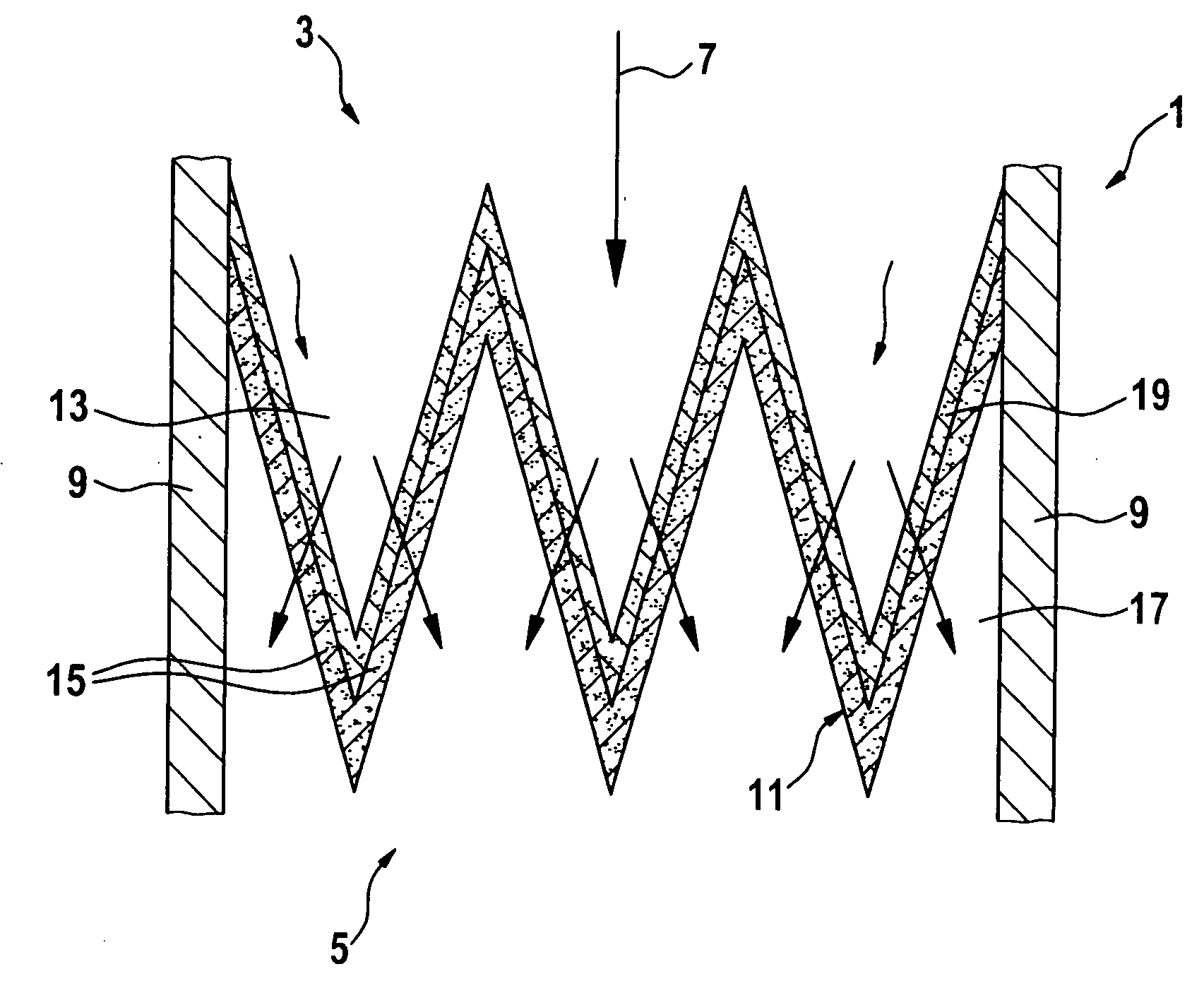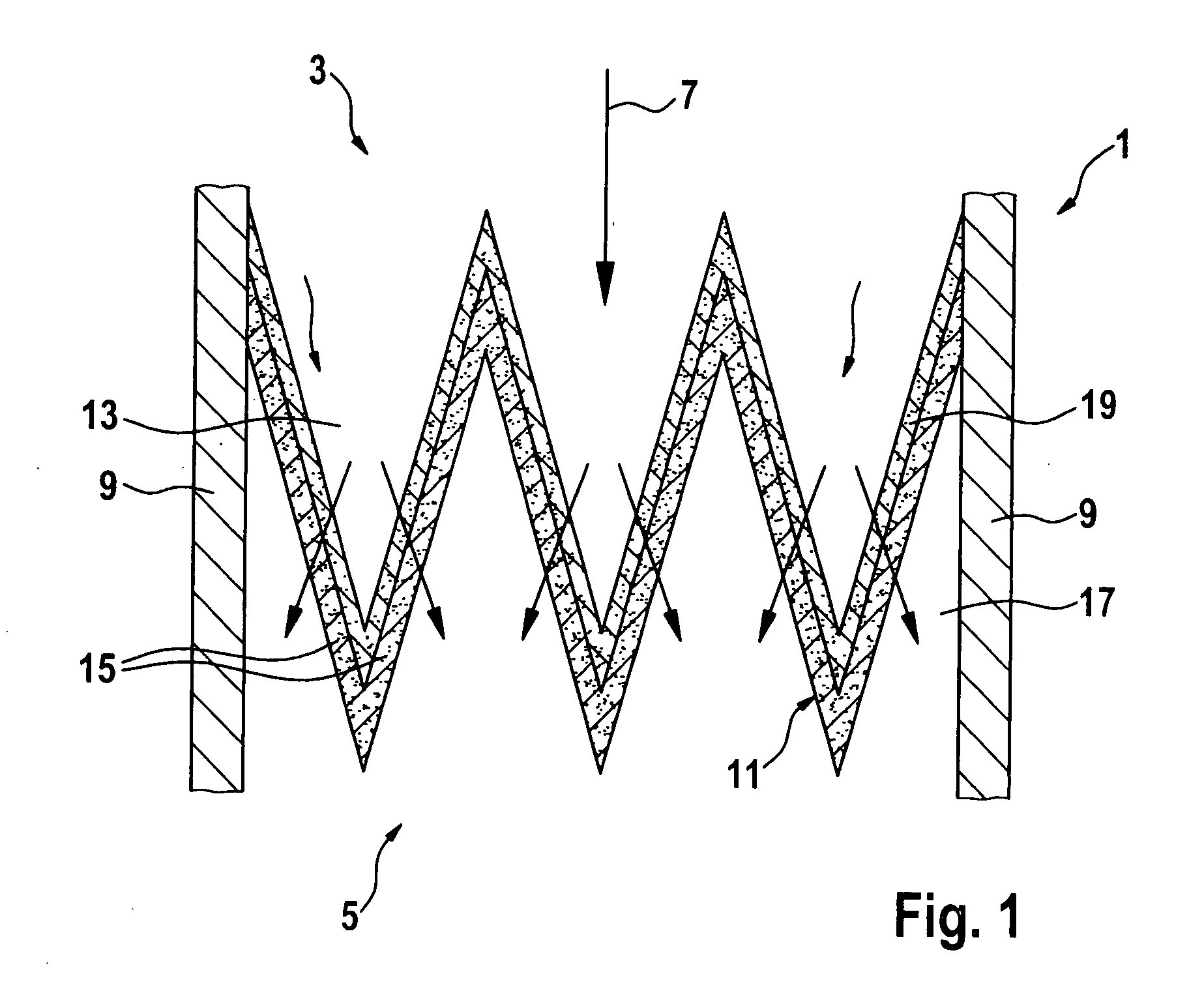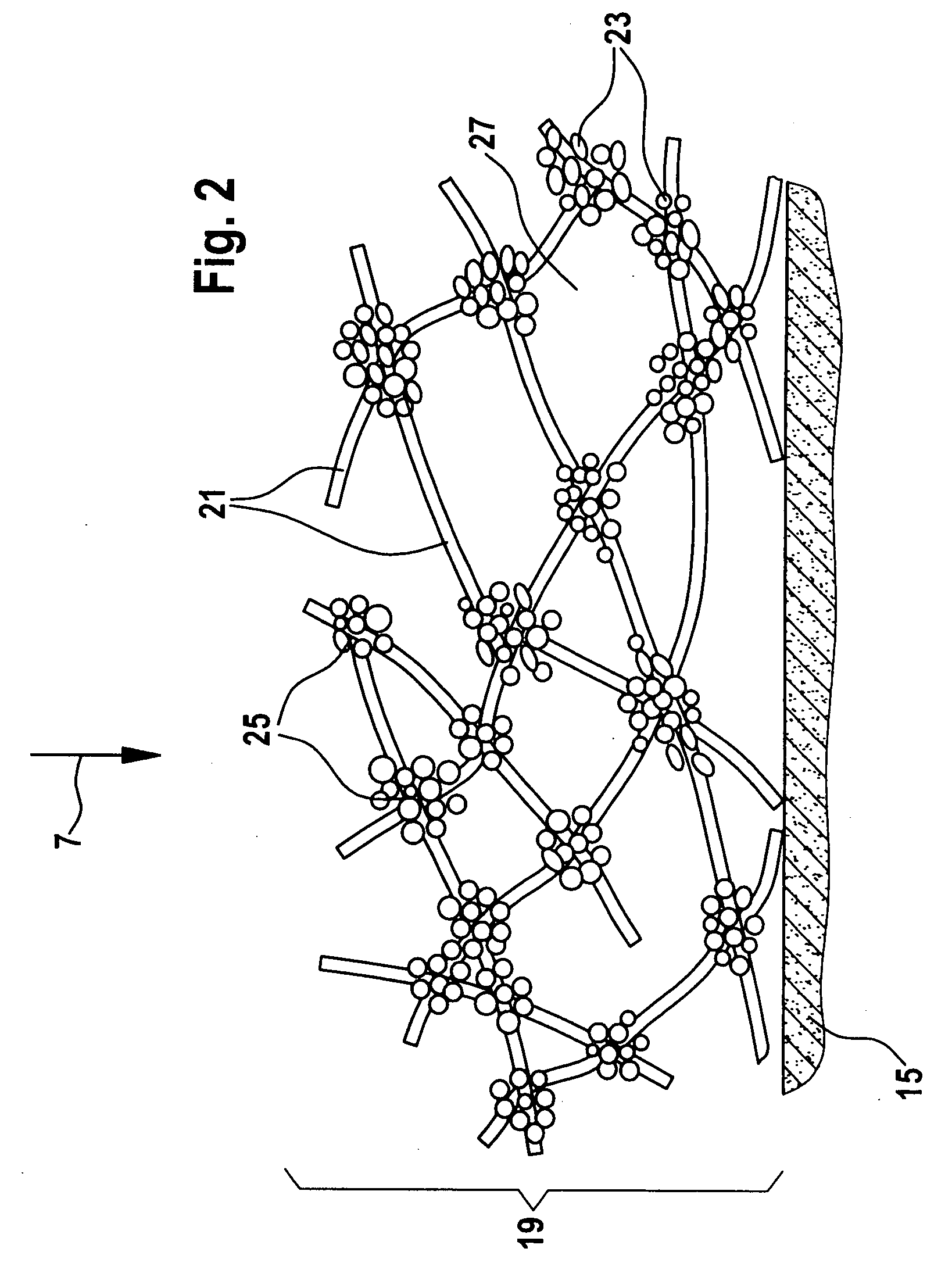Filter for purifying gas mixtures and method for its manufacture
a technology of purifying gas mixture and filter, which is applied in the direction of filtration separation, machine/engine, separation process, etc., can solve the problems of disintegration of soot particles and thus becoming more easily oxidizable, and achieve the effects of increasing the capacity for accumulating soot, improving mutual adhesion of fibers, and reducing the amount of soo
- Summary
- Abstract
- Description
- Claims
- Application Information
AI Technical Summary
Benefits of technology
Problems solved by technology
Method used
Image
Examples
Embodiment Construction
[0020]FIG. 1 shows the schematic structure of a filter for purifying gas mixtures. The filter is, for example, integrated into a system in which a gas mixture containing particulates which are preferably combustible is conducted. The system may be the exhaust gas duct of a Diesel combustion engine, for example. Alternatively, there is also the possibility to situate the filter in a bypass of the exhaust system.
[0021] A filter 1, as shown in FIG. 1, is designed as a stainless steel or sintered metal filter, for example, and has a first side 3 facing the gas mixture to be purified and a second side 5 facing the purified gas mixture. A gas mixture 7 loaded with particles is supplied to filter 1 on its first side 3. Gas mixture 7 loaded with particles is, for example, an exhaust gas stream of a diesel engine, containing soot.
[0022] Filter 1 has a housing 9 into which a filter structure 11 is integrated. Filter structure 11 includes pockets 13, whose ends facing first side 3 are open f...
PUM
| Property | Measurement | Unit |
|---|---|---|
| Flow rate | aaaaa | aaaaa |
Abstract
Description
Claims
Application Information
 Login to View More
Login to View More - R&D
- Intellectual Property
- Life Sciences
- Materials
- Tech Scout
- Unparalleled Data Quality
- Higher Quality Content
- 60% Fewer Hallucinations
Browse by: Latest US Patents, China's latest patents, Technical Efficacy Thesaurus, Application Domain, Technology Topic, Popular Technical Reports.
© 2025 PatSnap. All rights reserved.Legal|Privacy policy|Modern Slavery Act Transparency Statement|Sitemap|About US| Contact US: help@patsnap.com



